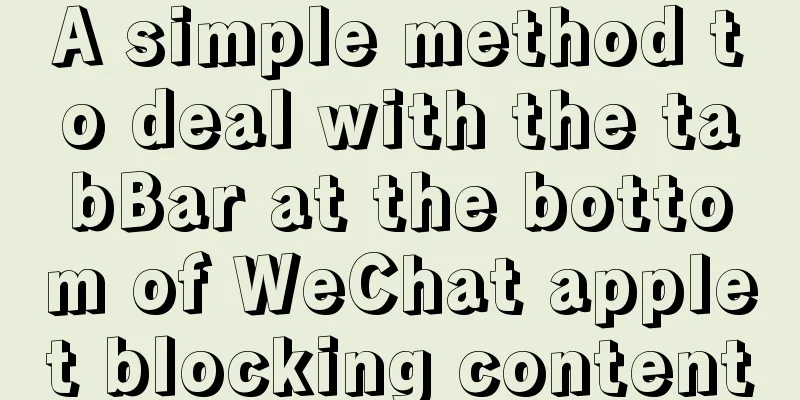Detailed explanation of CSS weight value (cascading) examples

|
•There are many selectors in CSS. What will happen if multiple selectors are applied to the same element? Code
<!DOCTYPE html>
<html lang="en">
<head>
<meta charset="utf-8">
<title></title>
<style type="text/css">
p{
color:red;
font-size: 10px;
}
#wrap{
color: deeppink;
font-size: 30px;
}
.box{
color:yellow;
font-size: 50px;
}
</style>
</head>
<body>
<p class='box' id="wrap">
Guess what color I am</p>
</body>
</html>• Execution can produce results
•Summary: This effect occurs because the browser determines which CSS style to use based on the weight value. The higher the weight value, the higher its priority will be, and that CSS style will be presented. The weight value of the id selector is 100> class selector 10> tag selector 1, so the final result is the style set by the id selector • Example 2 code
!DOCTYPE html>
<html lang="en">
<head>
<meta charset="utf-8">
<title></title>
<style type="text/css">
*{
color: cyan;
}
div {
color: yellow;
}
</style>
</head>
<body>
<div>
<p class='box' id="wrap">
Guess what color I am</p>
</div>
</body>
</html>• Execution results
•Summary: Inherited elements have no weight value, so the final result is the style set by the universal selector • Example 3 code
<!DOCTYPE html>
<html lang="en">
<head>
<meta charset="utf-8">
<title></title>
<style type="text/css">
p{
color: yellow;
}
*{
color: cyan;
}
</style>
</head>
<body>
<div>
<p class='box' id="wrap">
Guess what color I am</p>
</div>
</body>
</html>• Execution results
• Summary: The weight of the tag selector is 1, but it is still greater than the universal selector, so the final result is the style set by the tag selector • Example 4 code
<!DOCTYPE html>
<html lang="en">
<head>
<meta charset="utf-8">
<title></title>
<style type="text/css">
div p{
color: yellow;
}
div>p{
color: cyan;
}
p{
color: red;
}
</style>
</head>
<body>
<div>
<p class='box' id="wrap">
Guess what color I am</p>
</div>
</body>
</html>• Execution results
• Example 5 Code
<!DOCTYPE html>
<html lang="en">
<head>
<meta charset="utf-8">
<title></title>
<style type="text/css">
div>p{
color: cyan;
}
div p{
color: yellow;
}
p{
color: red;
}
</style>
</head>
<body>
<div>
<p class='box' id="wrap">
Guess what color I am</p>
</div>
</body>
</html>• Execution results
Calculation of weight value
<!--There is a structure like this: -->
<div class='wrap1' id='box1'>
<div class="wrap2" id="box2">
<p class='active'>MJJ</p>
</div>
</div>
<!--Give a few examples to see their weight values: -->
p{color:gray;} <!--The weight is 1-->
div div p{color:yellow;} <!--The weight is 1+1+1=3-->
.active{color:red;} <!--Weight 10-->
div .active{color:black;} <!--The weight is 11-->
div div .active{color:blue;} <!--The weight is 12-->
.wrap #box2 .active{color:purple;} <!--Weight is 120-->
#box1 #box2 .active{color:green;} <!--Weight is 210-->
<!--From this we can see that, in fact, for the calculation of weight value, first of all, it is not carried forward. For the selectors used, we are just counting, counting the number of selectors (in order, first id, then class, then element), for example: -->
#box1 .wrap2 div{ color:red; } <!--The weight is 1 1 1-->
Note: Inherited attributes also have weight values, but their weight values are very low, which can be understood as the lowest inherited weight value.
!important Example of increasing weight value<!--When we are doing web page code, there are some special cases where we need to set the highest weight value for certain styles. What should we do? For example, if we know that the weight value of inline style is 1000, which is relatively large, then we can use !important to solve it. -->
<!DOCTYPE html>
<html lang="en">
<head>
<meta charset="UTF-8">
<title>Use of !important</title>
<style type="text/css">
div{
color:green !important;
}
</style>
</head>
<body>
<div id="box" style="color:red;">
<span>MJJ</span>
</div>
</body>
</html>• Execution results
•Summary: Using !important is a bad habit and should be avoided as much as possible, because it seriously breaks the inherent weight comparison rules in style sheets, making it more difficult to debug bugs. When two conflicting rules with !important apply to the same tag, the one with the highest priority will be used. When can !important be used? • The first ◦Your website has a CSS file that designs the entire site style • The second How can I change the color of the text to red? In this case, if !important is not applied, the first rule always takes precedence over the second rule. Summarize:
Summarize The above is a detailed explanation of the CSS weight value (cascading) example introduced by the editor. I hope it will be helpful to everyone. If you have any questions, please leave me a message and the editor will reply to you in time. I would also like to thank everyone for their support of the 123WORDPRESS.COM website! |
<<: How to configure the pdflatex environment in docker
>>: Web page color matching example analysis: Green color matching web page analysis
Recommend
Pure CSS to display the √ sign in the lower right corner after selecting the product
Recommended articles: Click on the lower right co...
JS implements the dragging and placeholder functions of elements
This blog post is about a difficulty encountered ...
HTML Self-study Journey (I) Basic Elements and Attributes Practice (Write Your Own Code)
I followed the tutorial on W3school. I think the t...
Linux uses suid vim.basic file to achieve privilege escalation
Reproduce on Kali First set suid permissions for ...
Detailed analysis of matching rules when Nginx processes requests
When nginx receives a request, it will first matc...
In-depth understanding of mathematical expressions in CSS calc()
The mathematical expression calc() is a function ...
How to add abort function to promise in JS
Table of contents Overview Promise Race Method Re...
Summary of the use of vue Watch and Computed
Table of contents 01. Listener watch (1) Function...
Three ways to check whether a port is open in a remote Linux system
This is a very important topic, not only for Linu...
Summary of CSS usage tips
Recently, I started upgrading my blog. In the proc...
What are mysql dirty pages?
Table of contents Dirty pages (memory pages) Why ...
mysql server is running with the --skip-grant-tables option
The MySQL server is running with the --skip-grant...
How to modify iTunes backup path under Windows
0. Preparation: • Close iTunes • Kill the service...
Summary of some related operations of Linux scheduled tasks
I have searched various major websites and tested...
How does the composite index of MySQL take effect?
Table of contents background Understanding compos...
















